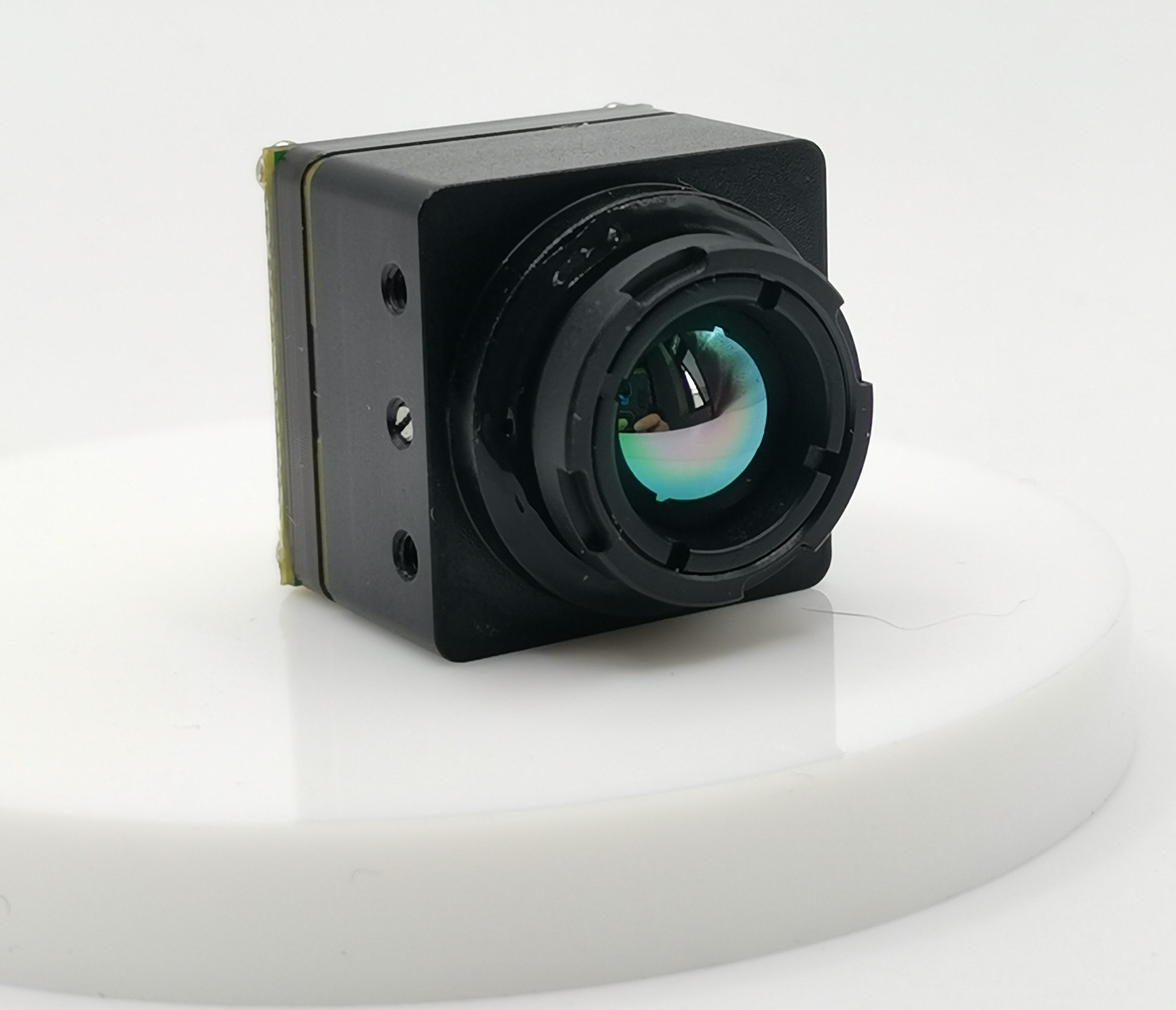The Ultimate Guide to Analog FPV Thermal Cameras for Drones: High-Resolution Imaging Capabilities

Exploring the World of Thermal Imaging
Thermal imaging is a fascinating technology that allows us to see the world in a completely different way. Thermal imaging involves using special cameras to capture the heat emitted by objects and convert it into visible images. This means that instead of seeing the colors and shapes of objects, we can see their temperatures and heat signatures. It's like having superpowers to detect warmth!
What is Thermal Imaging?
Thermal imaging, also known as thermography, is the process of using specialized cameras to capture infrared radiation emitted by an object or a person. These cameras can detect and visualize temperature differences, allowing us to see what our eyes cannot. By converting thermal energy into visible light, thermal imaging creates images that represent the variations in temperature across surfaces.
Seeing Heat with Special Cameras
With thermal imaging, we can literally see the heat radiating from objects, living beings, or even buildings. Every object with a temperature above absolute zero emits infrared radiation, and thermal cameras can capture this radiation to create detailed thermal images. This technology has numerous practical applications, from identifying heat leaks in buildings to detecting wildlife in complete darkness.
Why Drones Need Thermal Cameras
Drones equipped with thermal cameras for drones are revolutionizing various industries due to their unique capabilities. These aerial vehicles serve as "flying eyes in the sky," providing a bird's-eye view of landscapes and structures while capturing thermal data. The integration of thermal imaging technology enables drones to detect heat signatures from a distance, making them invaluable for search and rescue missions, surveillance operations, and environmental monitoring.
Flying Eyes in the Sky
By equipping drones with thermal cameras, they become powerful tools for tasks such as locating missing persons in remote areas or tracking wildlife without disturbing their natural habitats. The ability to visualize heat variations from above expands the possibilities for using drones beyond traditional visual imaging.
The Magic Behind Analog FPV Thermal Cameras
Understanding Analog FPV Technology
Analog FPV thermal cameras are at the forefront of drone technology, offering a unique perspective through the fusion of analog imaging and first-person view (FPV) capabilities. These cameras are designed to capture thermal data in real-time, providing operators with crucial insights into temperature differentials across landscapes and structures.
How FPV Works with Drones
Analog FPV technology functions by transmitting live video feeds from the drone's onboard thermal camera to a ground-based display or goggles worn by the operator. This seamless transmission allows for immediate analysis of thermal images, enabling swift decision-making during critical operations such as search and rescue missions or environmental surveys. The integration of analog FPV enhances the pilot's situational awareness, empowering them to navigate through challenging environments with precision.
The Role of High-Resolution in Thermal Cameras
When it comes to analog FPV thermal cameras, high-resolution capabilities play a pivotal role in capturing detailed thermal imagery. Every pixel in a thermal image represents a specific temperature value, making high-resolution essential for discerning subtle temperature variations. Whether used for inspecting power lines or monitoring wildlife, the clarity provided by high-resolution analog FPV thermal cameras ensures that no thermal anomaly goes unnoticed.
Why Every Pixel Counts
In the realm of analog FPV thermal imaging, every pixel contributes to the overall fidelity and accuracy of captured thermal data. A higher pixel count translates to finer details within the thermal image, allowing operators to identify smaller heat differentials with precision. This level of detail is indispensable for applications such as infrastructure inspection and wildlife conservation efforts, where even minor temperature variations can hold significant implications.
How Drones with Thermal Cameras Change the Game
Drones equipped with thermal imaging technology have transformed the landscape of various industries, expanding their capabilities from traditional visual imaging to high-precision thermal data capture.
From Rescue Missions to Wildlife Monitoring
These aerial marvels have become indispensable assets in search and rescue missions, where they serve as heroes, aiding in locating missing individuals in remote or hazardous environments. The ability of drones with thermal cameras to detect heat signatures enables them to spot individuals even in low-visibility conditions, significantly enhancing the efficiency and success rates of rescue operations. Moreover, these drones are also playing a crucial role in wildlife monitoring and conservation efforts. By capturing thermal data from above, they provide invaluable insights into animal behavior and habitat usage without causing disturbances, thus emerging as explorers in the realm of ecological research.
The iSUN FPV Thermal Camera: A Game-Changer
One standout example of cutting-edge thermal imaging technology is the iSUN FPV thermal camera. This game-changing device offers a suite of advanced features that elevate its performance and usability.
A Closer Look at Its Features
The iSUN FPV thermal camera boasts exceptional portability and ease of integration with various drone models, making it a versatile tool for diverse applications. With its high-resolution imaging capabilities and real-time data transmission, this thermal camera empowers operators with unparalleled situational awareness. Additionally, its user-friendly interface and intuitive controls make it accessible to both seasoned professionals and enthusiasts alike. Whether used for infrastructure inspections or environmental surveys, the iSUN FPV thermal camera stands out as a reliable companion for capturing precise thermal data.
Real-Life Superpowers: Applications of Thermal Imaging
Detecting Heat Leaks in Buildings
When it comes to enhancing energy efficiency and reducing environmental impact, thermal imaging plays a crucial role in identifying heat leaks within buildings. By utilizing specialized thermal cameras, professionals can pinpoint areas where heat is escaping from structures, enabling targeted insulation and sealing efforts. This not only contributes to significant energy savings for building owners but also aligns with sustainability goals by minimizing carbon emissions associated with excessive heating and cooling requirements.
Saving Energy, Saving the Planet
The ability of thermal imaging to detect heat leaks effectively translates into substantial energy conservation, as it allows for precise interventions to improve the thermal performance of buildings. By sealing these leaks, the demand for heating and cooling is reduced, leading to lower energy consumption and decreased reliance on fossil fuels. Ultimately, this proactive approach not only saves money for property owners but also contributes to the global effort of mitigating climate change by curbing unnecessary energy wastage.
Surveillance and Security: Keeping Us Safe
In addition to its role in energy efficiency, thermal imaging technology serves as a powerful tool for enhancing surveillance and security measures. The capability of thermal cameras to detect heat signatures enables them to monitor areas even in low-light conditions or complete darkness. This makes them invaluable assets for safeguarding critical infrastructure, borders, and public spaces.
Watching Over Us
By providing real-time insights into temperature differentials, thermal cameras contribute to comprehensive surveillance systems that keep communities safe from potential threats. Whether used for perimeter monitoring or intruder detection, thermal imaging technology offers an additional layer of security that complements traditional visual surveillance methods. Its ability to "see" heat signatures ensures that no suspicious activity goes unnoticed, thereby enhancing overall safety and peace of mind for individuals and organizations alike.
See Also
Complete Guide to Mastering Drone Photography with Analog FPV Thermal Cameras
In-Depth Comparison of Analog FPV Thermal Cameras for Drones
Optimizing Drone Performance with Analog FPV Thermal Cameras
Contact Us: Ms. Coco Huang
E-mail: sales@iasun.cn
WhatsApp/Wechat: +86 13510421923

